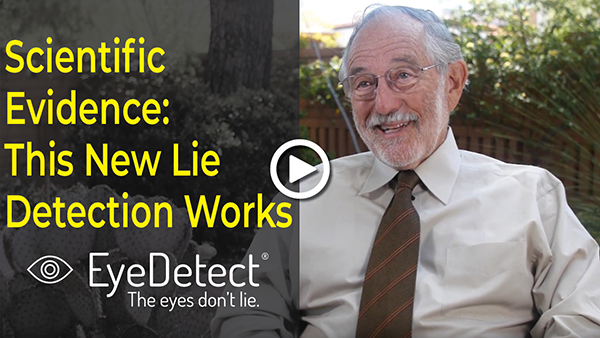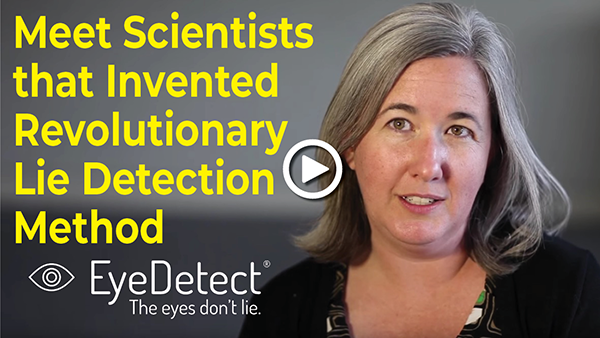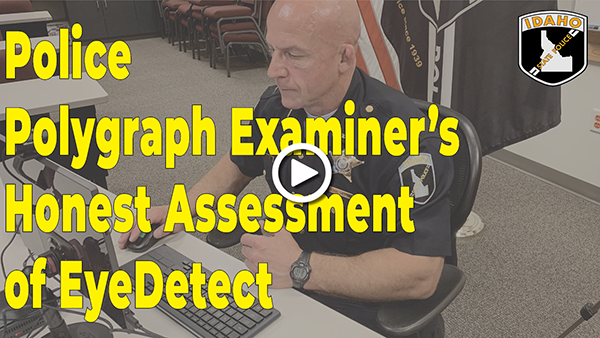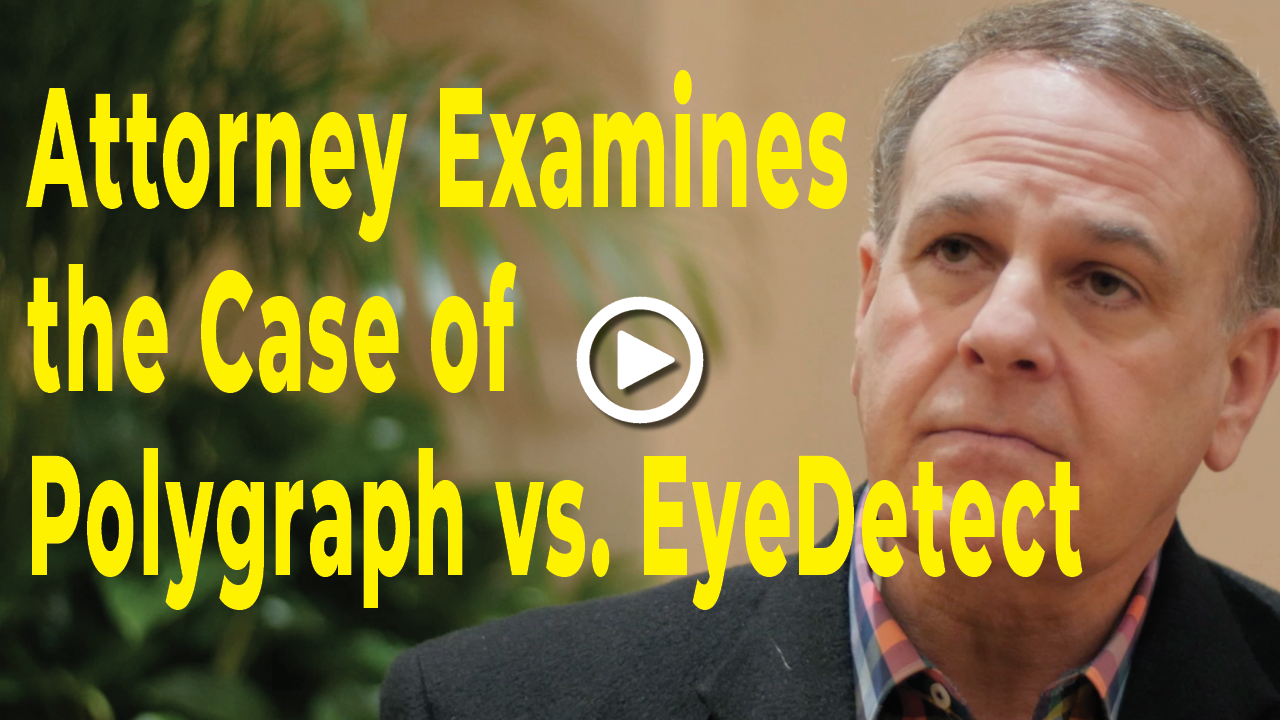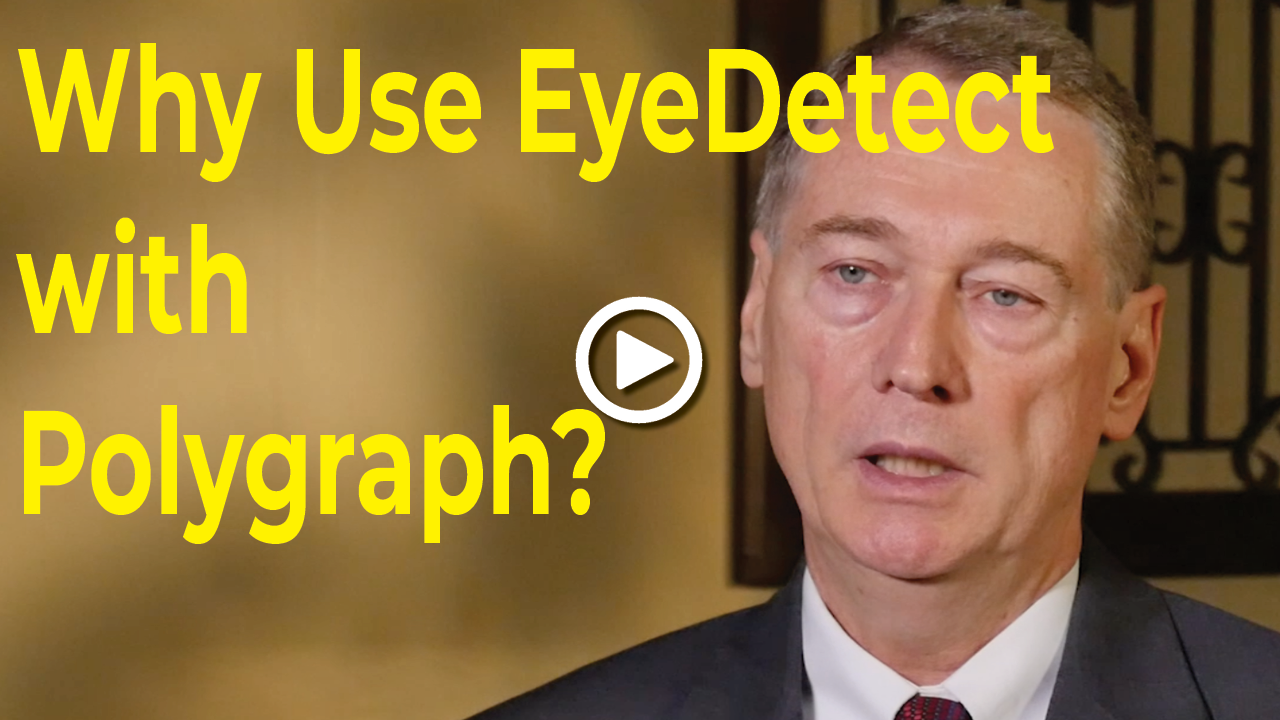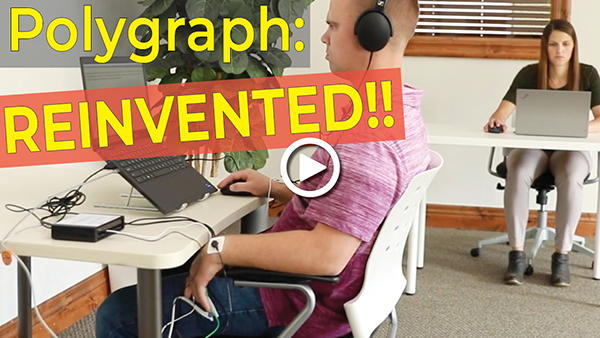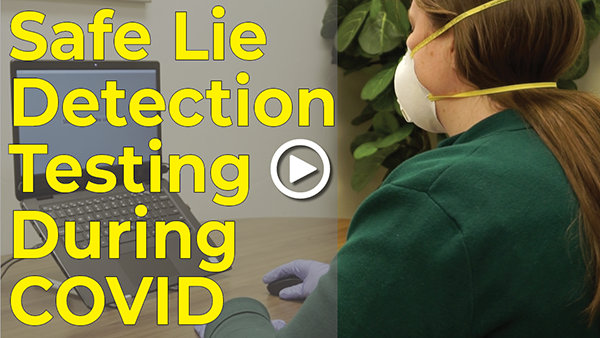
The Goal: Accurately Assess Credibility > Use the Best Tools
The goal of any credibility assessment expert is to accurately expose the truth and uncover lies. Polygraph has been the standard for a century. EyeDetect offers examiners new benefits—while allowing them to preserve the art of the interview.
It’s common for the tools of one’s trade to continue to improve and evolve. The lie detection industry is no different. See the evolution of lie detection technology over the years.
10 Reasons Polygraph Examiners Use EyeDetect
- Research backed by Kircher, Raskin and other experts
- Accuracy comparable to polygraph
- Test examinees unsuitable for polygraph
- Less invasive alternative
- Diagnostic tests only take 15 minutes
- Screening tests only take 30 minutes
- Reports with results in just 5 minutes
- Outcome confidence 97-99% when used with polygraph
- Easy to use — tests are automated
- Tests available in 50+ languages
Successive Hurdles Testing
In 1955, Meehl & Rosen proposed that if a person could pass two independent lie detection tests on the same topic, there would be 97-99% confidence in the outcome of the tests.
The “successive hurdles” concept they proposed only works if the two tests are independent. Polygraph measures physiological changes. EyeDetect measures involuntarily eye and reading behaviors caused by changes in cognitive load. Hence, they are largely independent.
This means for the first time in the history of lie detection, the successive hurdles model can be reliably used and trusted since EyeDetect and polygraph are highly accurate and independent.
The successive hurdles argument could never be used with polygraph alone. With the advent of EyeDetect, this important statistical model now has applicability.
Read more about successive hurdles in the AAPP Journal.
The World’s First Automated Polygraph: EyeDetect+
EyeDetect+ combines the best of polygraph with EyeDetect. Overall accuracy is improved. The test is less invasive (no blood pressure cuff). Examiners can continue to conduct pre- and post-test interviews.
Video on EyeDetect+
Comparison of Polygraph, EyeDetect and EyeDetect+
Brochure about EyeDetect+
Summary of EyeDetect Research
One-of-a-Kind Multi-Issue Screening Test
For the first time in the history of lie detection, EyeDetect’s new Multi-Issue Comparison Test (MCT) protocol allows examiners to run a screening test with 4 relevant questions and, best of all, each topic is scored individually. This type of information allows examiners to focus on the topic(s) of greatest concern in a post-test interview.
See John Kircher’s quote referring to this significant advancement (gray box on the right).
Safe Social Distancing
Concerns about safe social distancing during testing are legitimate. EyeDetect solve this issue. Get more information here about how examiners can maintain a safe distance during EyeDetect testing.
Contact us to learn more.
Read: Summary of Research
“Polygraph examiners recognize that what makes today’s polygraph better than it was in years past is the addition of more and better data channels, advanced testing protocols, improved sensors, and inclusion of automation for more reliable testing and valid data analysis. In that vein, EyeDetect+ 2.0 represents the next step in polygraph’s evolution.”
–Don Krapohl, former assistant director of NCCA, former U.S. federal government polygraph examiner, & Converus Advisory Board member
“If I could only use one credibility assessment tool in criminal investigations, it would be EyeDetect. [It] is faster and free of examiner influence or bias. The process is simple.”
– Detective and polygraph examiner, Mark Palfreyman, Nampa PD
“Using EyeDetect and polygraph in a successive hurdles model is the most scientifically effective way to improve testing results.”
– Mark Handler, independent polygraph examiner and APA board member
“In my 42 years of working with deception detection technologies, the discovery of predictors that accurately pinpoint which questions were answered deceptively is one of the most significant experiences in my career.”
– Dr. John C. Kircher, co-inventor of digital polygraph and ocular-motor deception test

Converus (“with truth”) provides scientifically validated credibility assessment technologies that help protect countries, corporations and communities from corruption, crime and threats.


